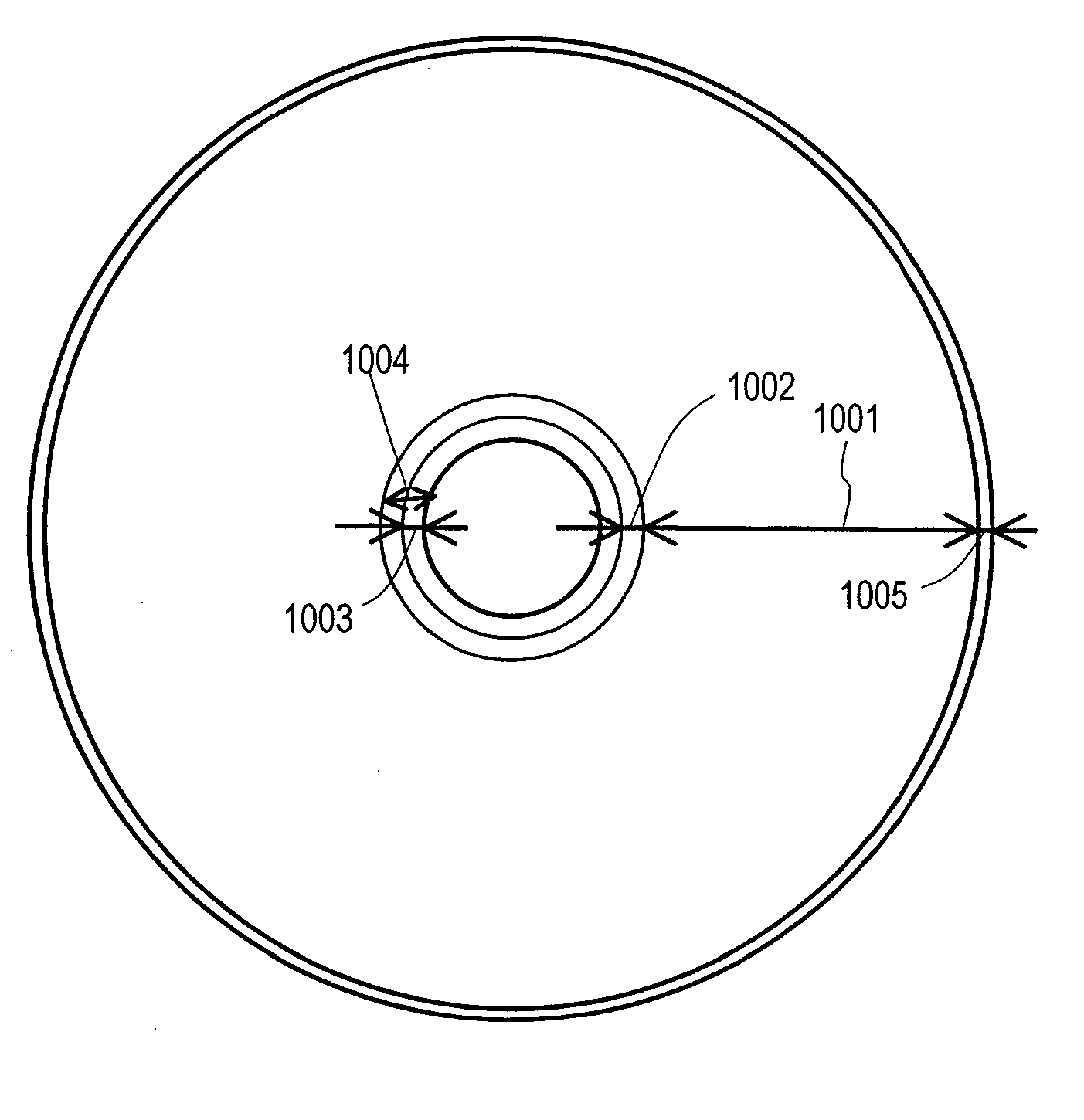Method for inspecting optical information recording medium, inspection apparatus, optical information recording medium and recording method
a technology of optical information and recording medium, which is applied in the direction of digital signal error detection/correction, instruments, recording signal processing, etc., can solve the problems of inability of optical disc drives to get the focus servo control or tracking servo control done perfectly, the position of information written on the track and the height of storage layer would change quickly, and the level of storage layer change, etc., to achieve the effect of linear velocity and rotational velocity of optical information storage medium, good ser, and low ra
- Summary
- Abstract
- Description
- Claims
- Application Information
AI Technical Summary
Benefits of technology
Problems solved by technology
Method used
Image
Examples
Embodiment Construction
[0056]Hereinafter, preferred embodiments of the present invention will be described as being applied to a BD-R (i.e., write-once Blu-ray Disc, which is one of various types of optical discs) as an exemplary optical information storage medium. However, the present invention is in no way limited to those specific preferred embodiments. Alternatively, an optical information storage medium according to the present invention may also be a BD-RE (i.e., a rewritable Blu-ray Disc) on which information can be rewritten a number of times, a BD-ROM (i.e., a read-only Blu-ray Disc), or an optical disc compliant with any other standard.
[0057]Main optical constants and physical formats for Blu-ray Discs are disclosed in “Blu-ray Disc Reader” (published by Ohmsha, Ltd.) and on White Paper at the website of Blu-ray Association (http: / / www.blu-raydisc.com), for example. Specifically, as for a BD-R, an objective lens for a laser beam with a wavelength of 405 nm and with an NA of 0.85 is used. A BD-R ...
PUM
| Property | Measurement | Unit |
|---|---|---|
| linear velocity Lv2 | aaaaa | aaaaa |
| linear velocity Lv2 | aaaaa | aaaaa |
| linear velocity Lv2 | aaaaa | aaaaa |
Abstract
Description
Claims
Application Information
 Login to View More
Login to View More - R&D
- Intellectual Property
- Life Sciences
- Materials
- Tech Scout
- Unparalleled Data Quality
- Higher Quality Content
- 60% Fewer Hallucinations
Browse by: Latest US Patents, China's latest patents, Technical Efficacy Thesaurus, Application Domain, Technology Topic, Popular Technical Reports.
© 2025 PatSnap. All rights reserved.Legal|Privacy policy|Modern Slavery Act Transparency Statement|Sitemap|About US| Contact US: help@patsnap.com



